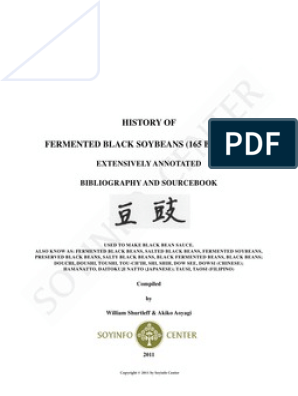0% found this document useful (0 votes)
164 views2 pagesSoy Sauce
Soy sauce originated in China during the Zhou dynasty as a sauce called Jiang made from meat or grains that was preserved with salt. During the Han dynasty, soybeans replaced the meat and grains as the main ingredient. The process of fermenting soybeans to make soy sauce spread to Japan in the 13th century via Buddhist monks. By the 17th century, the Japanese introduced soy sauce to Europe. Traditionally, making soy sauce takes about a year and involves soaking, cooking, and fermenting soybeans with wheat and koji mold for a year to produce the familiar condiment. Some Italians have begun experimenting with using soy sauce in their cuisine, such as in a recipe for chicken wings mar
Uploaded by
Wajiha SulmanCopyright
© © All Rights Reserved
We take content rights seriously. If you suspect this is your content, claim it here.
Available Formats
Download as DOCX, PDF, TXT or read online on Scribd
0% found this document useful (0 votes)
164 views2 pagesSoy Sauce
Soy sauce originated in China during the Zhou dynasty as a sauce called Jiang made from meat or grains that was preserved with salt. During the Han dynasty, soybeans replaced the meat and grains as the main ingredient. The process of fermenting soybeans to make soy sauce spread to Japan in the 13th century via Buddhist monks. By the 17th century, the Japanese introduced soy sauce to Europe. Traditionally, making soy sauce takes about a year and involves soaking, cooking, and fermenting soybeans with wheat and koji mold for a year to produce the familiar condiment. Some Italians have begun experimenting with using soy sauce in their cuisine, such as in a recipe for chicken wings mar
Uploaded by
Wajiha SulmanCopyright
© © All Rights Reserved
We take content rights seriously. If you suspect this is your content, claim it here.
Available Formats
Download as DOCX, PDF, TXT or read online on Scribd
/ 2

























































































